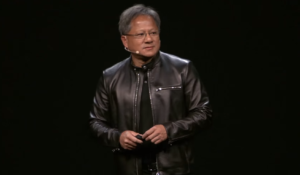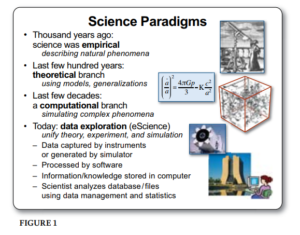Nvidia CEO Jensen Huang revived a decade-old debate last month when he said that modern data science (AI plus HPC) has become the fourth pillar of the scientific method. While some disagree with the notion that statistical analysis alone can reveal undiscovered laws, the argument may be moot if data science continues its current course being an extremely useful and in-demand tool for all manners of scientific discovery.
Huang made his statement about data science being the fourth pillar of science during his keynote address at the Nvidia GPU Technology Conference (GTC) 2019 show, which attracted several thousand people to the San Jose State University event center.
“Data science is the fastest growing field of computer science today,” Huang said. “Because of several different factors, it has become the fourth pillar of the scientific method.”
The first pillar of the scientific method is the experimental method, such a Isaac Newton’s Laws of Motion. The second pillar is the theoretical. An Albert Einstein thought experiment is an example of this form of scientific discovery.
The third pillar of the scientific method, per Huang, is computer simulation. Scientists developing advanced models that describe molecular dynamics are an example of this type of scientific endeavor.

“And now we have a data-driven, data-science method, and it’s made possible because of three factors,” Huang said. Those three factors are the generation of big data, breakthroughs in machine learning and deep learning algorithms, and high performance computers.
“The availability of data, machine learning algorithms, and HPC has made is possible for us now to use this as the fourth pillar of scientific discovery,” he said. “These three factors continuously feed on each other and now data science is a pillar of the scientific method…We’re solving problems that were just previously impossible.”
Huang’s words echoed the content of a 2009 book, titled “The Fourth Paradigm: Data-Intensive Scientific Discovery,” which was published by Microsoft Research. The book is a collection of essays that expand on the ideas of Jim Gray, a pioneering computer scientist with Microsoft Research who disappeared at sea in 2007.
In the foreword, Microsoft Researcher Emeritus Gordon Bell reminds us that it was Tycho Brahe’s assistant, Johannes Kepler, who discovered the laws of planetary motion by analyzing Brahe’s astronomical data. “This established the division between the mining and analysis of captured and carefully archived experimental data and the creation of theories,” Bell wrote. “This division is one aspect of the Fourth Paradigm.”

One thinks that Gray might be pleased at the progress that has been made in the development of tools for capturing, curating, analyzing, and visualizing data, which he identified as the areas of biggest needs for research in one of his last public keynote addresses in 2007 (that keynote was adapted for the first essay in “The Fourth Paradigm”).
“…[A]lmost everything about science is changing because of the impact of information technology,” Gray wrote. “Experimental, theoretical, and computational science are all being affected by the data deluge, and a fourth, ‘data-intensive’ science paradigm is emerging. The goal is to have a world in which all of the science literature is online, all of the science data is online, and they interoperate with each other.”
But not everybody agrees that data science is the fourth pillar of scientific method.
Read the rest of this article at sister site Datanami.




























































